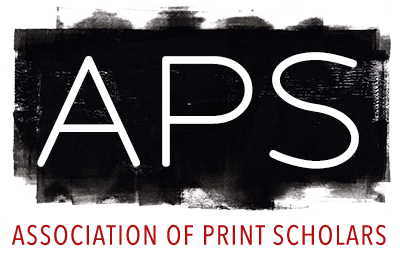Raffael und Raimondi: Produktion und Intention der frühen Druckgraphik nach Raffael
This German-language book by Anne Bloemacher addresses the question of whether Raphael Sanzio da Urbino guided the timely use of prints to reproduce his pictorial designs, or if Marcantonio Raimondi appropriated the images without the express desire of Raphael. Bloemacher considers recently discovered under drawings as well as extant preparatory studies to argue for Raphael’s active participation in the dissemination of his inventions in the medium of engraving. In her investigation, Bloemacher further explores the facets of cooperation between painters and engravers, considering workshop practices, methods of production, economic factors, and aspects of artistic competition and self-representation.
The book is divided into six chapters:
I. Introduction. Bloemacher outlines her research questions and methods, and she defines the terms reproduction, original, copy, and translation.
II. Raphael and Raimondi in Sources: Early Literature and Pictorial Evidences. This chapter covers Giorgio Vasari’s texts about Raphael and Raimondi, written sources on Raimondi and his collaboration with Raphael, other early literature about both artists, and their portraits of one another.
III. The Production of the Engraving: On the Transformation of the Invented Image in Drawing, Painting, and Engraving. This chapter explores workshop practices of Raphael and Raimondi. It includes investigations of the Fossombroner Sketchbook and Codex Escurialensis, both containing drawings by unknown hands and which provided source material for engravings by Raimondi and Agostino Veneziano. The heart of this chapter is a comparative analysis of original drawings, under drawings, and engravings, related to six of Raphael’s paintings.
IV. On the Intention of the Engraving: The Reflection of Invention in Some Contemporary Engravings after Raphael. The chapter, the longest in Bloemacher’s book, examines and interprets Raimondi’s blank signature tablet as a tabula rasa or blank slate, and thus a philosophical metaphor for invention. In the same section are considered Raimondi’s portrait of Raphael and Ugo da Carpi’s signature and use of framing devices. The next section looks at the revision of invention in second versions (i.e. new editions) of engravings (e.g. Massacre of the Innocents) and the later translation of earlier paintings into engravings. The chapter’s final section addresses the idea as product: the commercial production and handling of images, including a look at “cheap copies” and Giovanni Antonio da Brescia as copyist of Raphael-Raimondi products.
V. Review: The Beginning of the Collaboration. This chapter returns to prints related to the inception of Raphael and Raimondi’s partnership. It also examines Raimondi’s methods of shading (hatching) and discusses the chronology of prints with multiple versions, including Massacre of the Innocents. Also explored are the relationships between shading theory and practice of Leonardo da Vinci, Albrecht Dürer, and Raimondi.
VI. Conclusion
The book is divided into six chapters:
I. Introduction. Bloemacher outlines her research questions and methods, and she defines the terms reproduction, original, copy, and translation.
II. Raphael and Raimondi in Sources: Early Literature and Pictorial Evidences. This chapter covers Giorgio Vasari’s texts about Raphael and Raimondi, written sources on Raimondi and his collaboration with Raphael, other early literature about both artists, and their portraits of one another.
III. The Production of the Engraving: On the Transformation of the Invented Image in Drawing, Painting, and Engraving. This chapter explores workshop practices of Raphael and Raimondi. It includes investigations of the Fossombroner Sketchbook and Codex Escurialensis, both containing drawings by unknown hands and which provided source material for engravings by Raimondi and Agostino Veneziano. The heart of this chapter is a comparative analysis of original drawings, under drawings, and engravings, related to six of Raphael’s paintings.
IV. On the Intention of the Engraving: The Reflection of Invention in Some Contemporary Engravings after Raphael. The chapter, the longest in Bloemacher’s book, examines and interprets Raimondi’s blank signature tablet as a tabula rasa or blank slate, and thus a philosophical metaphor for invention. In the same section are considered Raimondi’s portrait of Raphael and Ugo da Carpi’s signature and use of framing devices. The next section looks at the revision of invention in second versions (i.e. new editions) of engravings (e.g. Massacre of the Innocents) and the later translation of earlier paintings into engravings. The chapter’s final section addresses the idea as product: the commercial production and handling of images, including a look at “cheap copies” and Giovanni Antonio da Brescia as copyist of Raphael-Raimondi products.
V. Review: The Beginning of the Collaboration. This chapter returns to prints related to the inception of Raphael and Raimondi’s partnership. It also examines Raimondi’s methods of shading (hatching) and discusses the chronology of prints with multiple versions, including Massacre of the Innocents. Also explored are the relationships between shading theory and practice of Leonardo da Vinci, Albrecht Dürer, and Raimondi.
VI. Conclusion
